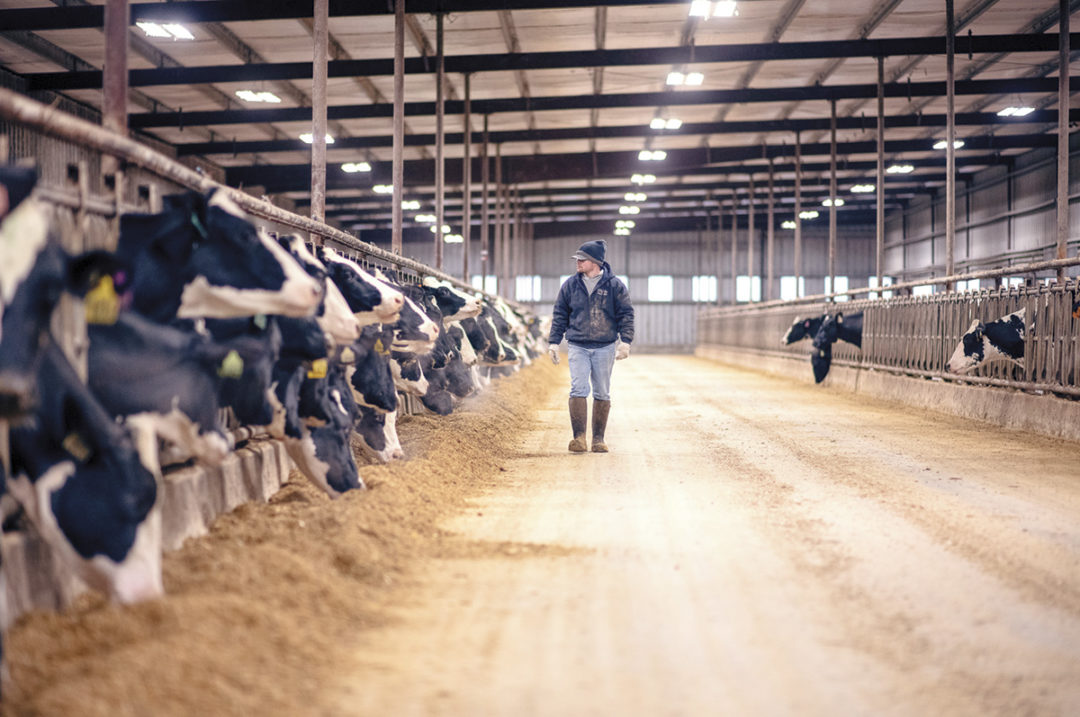While most ectoparasites may take a break for the winter, it is important not to let your guard down because some parasites like mites and lice prefer the cooler time of the year. Cows infected with mites and lice will often be itchy and become irritated and restless, which can lead to loss of milk production. Mites can also damage the hide, impacting leather quality, further reducing the animal's value.
Understanding mange
Dermatitis, or inflammation of the skin, which leads to itching can be caused by many things. However, when caused by mites it’s called mange. Mites are in the arachnid class and, like spiders, have eight legs. They complete their entire life cycle on the host. There are five primary types of mites in cattle: Those that burrow into the skin include Sacroptes scabieibovis, which is also zoonotic; Demodex bovis and Psorobia bos, and those that live on the surface of the skin including Psoroptes ovis and Chorioptes bovis. Mites are difficult to see with the naked eye, so to confirm the diagnosis or the species present, a superficial or deep skin scraping is required depending on the species suspected.
Chorioptic mange, caused by Chorioptes bovis, is the most common in North America and is generally milder than mange caused by sacroptes or psoroptes species. Chorioptic mange occurs in both beef and dairy animals and is primarily seen in confined cattle. Chorioptes bovis feed on skin cells and other surface debris, causing abrasions that can then become contaminated. Lesions include papules, scabs, ulcers, crusts and flakes, and are typically seen around the tailhead and perianal fossa. Transmission is by direct contact of infected animals with non-infected animals or by humans through routine cattle handling.
Chorioptes bovis can live off the host for several weeks, which is cause for concern because it makes eradication more difficult. In a study conducted to evaluate the effects of whole-herd treatment on naturally occurring chorioptic mange lesions, an entire herd was treated with a single dose of an avermectin. Over the 12 months of the study, prevalence and severity of mange lesions were significantly reduced over time; however, the infestation was still present. To better approach eradication, the authors recommend two whole-herd treatments no more than six months apart. Note that mange in sheep and goats caused by Chorioptes bovis and Psoroptes ovis are reportable diseases in the U.S.
Understanding lice
Lice are host-specific and completely dependent on their host to complete their life cycle, although they may survive off the host for a short time. Lice are wingless insects with six legs and are visible with the naked eye, although magnification may be necessary to identify the specific species. Lice thrive in the winter and will subside when the temperatures are warmer. If you see cattle with hair loss and an unthrifty appearance or find hair patches on fences or other objects, lice may be your culprit.

Lice infecting cattle include biting and sucking lice and are host-specific. Photo courtesy of Elanco Animal Health.
Lice can be broadly categorized into two categories depending on how they feed: biting lice or sucking lice. Biting lice will feed on skin debris and prefer the top side of the animal and flank region, whereas sucking lice prefer the head, neck wither and bottom of the animal and feed on blood. Humans are only infected by sucking lice and cannot be infected by those species infecting cattle, meaning they are not zoonotic.
The life cycle of lice typically lasts three to four weeks, and all stages of the life cycle can be found on the host. Lice are transmitted by direct contact, but as is the case with mites, humans can help them move from one animal to the other. Lice infestation, or pediculosis, can irritate the animal, and the restlessness from itching and severe infestations can cause a significant reduction in weight gain. To diagnose lice, part the hair in the infected area and search for the insects themselves or the nits (lice eggs). Clipping the hair, magnification and a bright, focused light may help find the pests.
Tips for effective mitigation and control of mange and lice
Controlling ectoparasites in dairy cattle requires a multifaceted approach. Through proactive management, producers can mitigate the impact of mites and lice and promote the overall success of their operation. This includes implementing quarantine protocols and developing an annual whole-herd parasite control program.
Whenever new animals are introduced to the herd, quarantine protocols are essential. Isolating and closely monitoring new arrivals will help prevent the spread of mites and lice as well as other diseases to the existing cattle population. Remember to treat any new animals entering the herd on arrival, including dry cows, first-calf heifers and newly purchased additions as an important element in a biosecurity program.
An annual whole-herd parasite control program in late fall is crucial to keep irritating and painful mites and lice at bay during the winter months. When it comes to your parasite control program, it is also important to consider the following:
- While it can be tempting, it is not recommended to abandon parasite control programs in difficult economic times. Keeping animals healthy and comfortable also keeps them productive and, in the end, can increase your bottom line. Both mites and lice, and sometimes even internal parasites, can be found in completely confined cattle.
- Pouring first-lactation cows is important for protecting them in the final stages of their growth and maximizing the first lactation.
- Ensure your parasite control product is labeled to control Psoroptes ovis and the chorioptic tailhead mange mite, Chorioptes bovis.
- Many treatments commonly used for lice will not kill nits, so it’s highly recommended to do a second application two to four weeks following the first application. When comparing products, combination products containing insect growth regulators (IGR), such as diflubenzuron, and another chemical, such as permethrin, can kill both adults and eggs, requiring only one application. While initial product cost may be more, choosing one-dose applications can be cost-competitive when considering labor required for two application products.
To learn more about protecting your herd from pesky mange and lice, talk with your herd veterinarian or technical consultant.
References omitted but are available upon request by sending an email to the editor.






